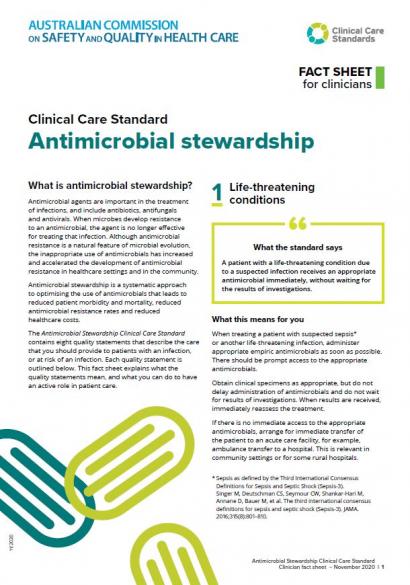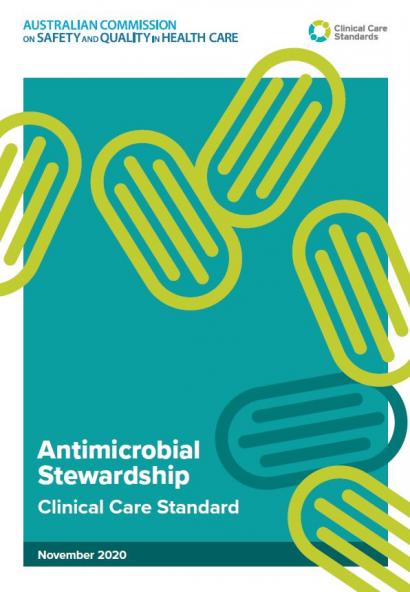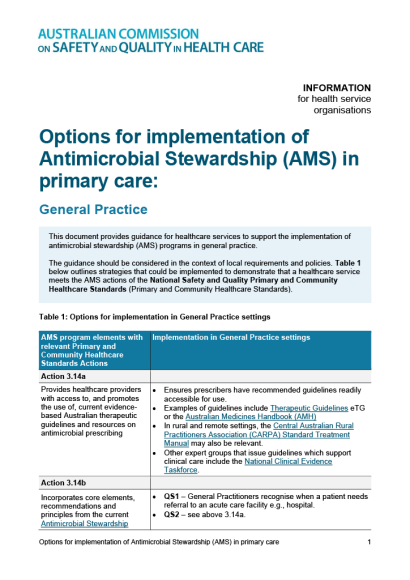What the standard says
When an adverse reaction (including an allergy) to an antimicrobial is reported by a patient or recorded in their healthcare record, the active ingredient(s), date, nature and severity of the reaction are assessed and documented. This enables the most appropriate antimicrobial to be used when required.
What this means for you
Before prescribing, dispensing or administering an antimicrobial, consider the patient’s previous adverse reactions to medicines. Check the healthcare record and ask the patient about their previous adverse reactions, including the:
- Active ingredient(s)
- Date the adverse event occurred
- Nature and severity of the reaction including how it was managed
- Place where they recorded it, such as on an allergy bracelet or a medicines list.
If any of the essential elements for assessing an adverse reaction are unknown (see below), this should be explicitly documented in the patient’s healthcare record.
Assess the likelihood of the adverse reaction being caused by the active ingredient(s). Factors relevant to your decision about whether to use an antimicrobial or not include the potential for the adverse reaction to recur and the likely consequences to the patient. Use information about the patient’s adverse reaction history and evidence-based guidelines to assess the most appropriate antimicrobial to use. Review the accuracy of the documentation and update the patient’s healthcare record.
Communicate any changes to a patient’s adverse reaction or allergy status to the patient and their regular clinician (for example, in My Health Record or a discharge summary for the general practitioner). It may also be necessary to update the patient’s medicines list.
If a patient experiences a new adverse reaction to an antimicrobial, document the essential elements in the patient’s healthcare record. Any new or suspected adverse reactions should also be recorded in the organisation-wide incident reporting system and reported to the Therapeutic Goods Administration.
Essential elements for assessing an adverse reaction to a medicine
The essential elements for assessing an adverse reaction are the:
- Patient’s description of the event (what happened to the patient)
- Nature of the reaction (diagnosis of the reaction)
- Active ingredient(s) thought to have caused the adverse reaction
- Assessment of likelihood (certainty it was caused by the active ingredient)
- Severity of event (consequence to the patient, for example hospitalisation)
- Date and location of the care (because the original record may have more detail).
Note: in some cases the adverse reaction may be due to the formulation, batch, a combination of ingredients or the inactive ingredients.



